The 5 Coolest Features on the $4-Million, 1800-HP Bugatti Tourbillon
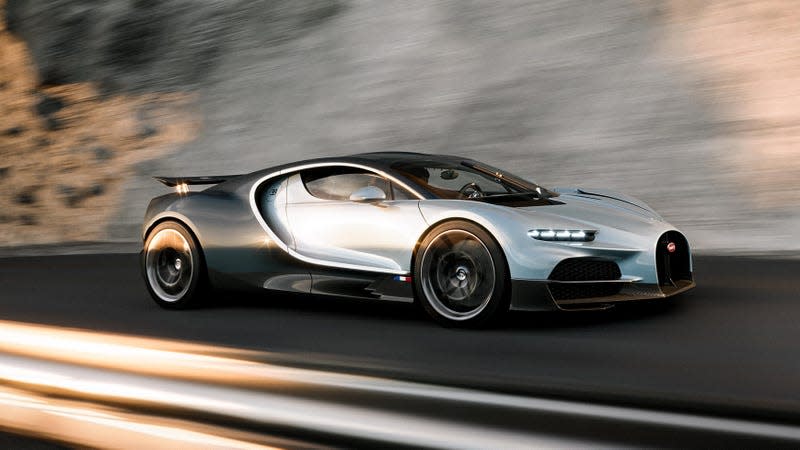
Bugatti just unveiled its latest seven-figure ultra-car, the Tourbillon. Though it defies the marque’s recent tradition of naming its vehicles after notable drivers from its history, the moniker makes sense. Not just because a tourbillon is an exquisite mechanical object crafted to precise tolerances, or because it is, like the brand, a French invention, but because one can’t spell it without the word Billion, and that net worth is the price of entry for Bugatti owners. (Bullion also works.)
The car’s stats are impressive. Gone is the lunatic quad-turbocharged 8.0-liter W16 engine that powered the Tourbillon’s predecessors, the Chiron and Veyron (and all their variants) in outputs ranging from 1000 to 1578 horsepower. It has been replaced by an even more outrageous powertrain: a naturally-aspirated, 1000-hp 8.3-liter V-16, combined with an 800-hp trio of electric motors, two driving the front wheels and one helping out the ICE amidship on the rears. Though Bugatti claims that, having crested the 300 mph barrier, chasing top speed records is now gauche, acceleration and V-max should be virulent enough to provide temporary supplemental facelifts for its clients, keeping the rattles out of their wattles.
But now that scorching off-the-line performance is available to anyone with enough lithium-ion cells — or a contract with Rimac Technologies, the electric go-fast subsidiary of Rimac Automobili, the Croatian battery-powered supercar manufacturer that Bugatti merged with a few years back — a Bugatti must provide something more. It must provide an experience, an occasion, enduring delight.
Our favorite features in the new car do just this. Read on to find out what we mean.
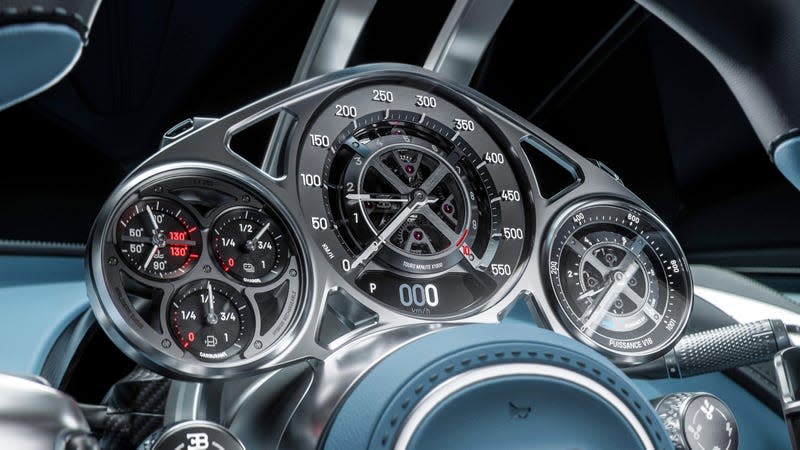
Instrument Panel: We’re not sure which came first, the car’s name or the design of this instrument panel, but Bugatti has taken the whole Tourbillon experience to the next level, with a set of gauges constructed with the same precision and aesthetic as the movement in a fine Swiss watch. Its titanium, sapphire, and ruby mechanisms perform an analog ballet. So in order to provide owners with the best possible view of their needles’ sweep, Bugatti has designed a fixed hub steering wheel, the spokes of which connect to the column behind the “skeletonized cluster.”
Thus, no matter where one is in the wheel’s rotation, the lovely gauges are always visible. We’re particularly fond of the central tachometer-inside-the-speedometer setup, as it reminds us of a similar layout on the first-generation Honda Prelude.
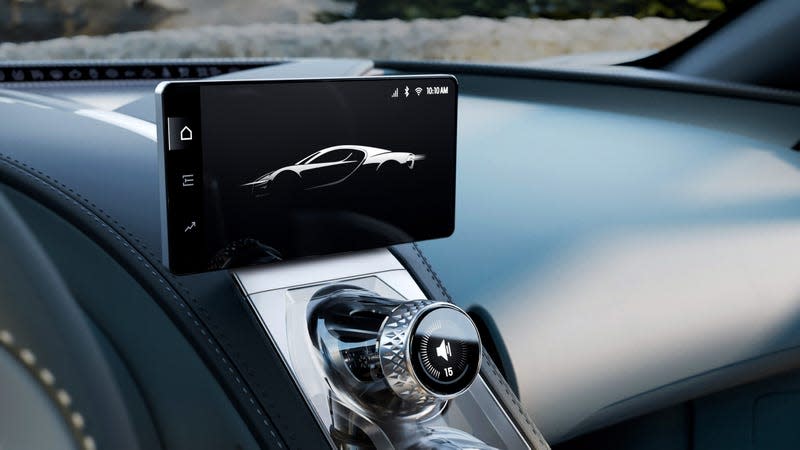
(Almost) No Screens: Praise Carrus — the jackal-headed, Olympic gymnast-bodied god of automobiles! Bugatti is running counter to the heinous automotive trend of metastasizing LCD screens. This contrarian position extends beyond the aforementioned analog instrument cluster, to the entire cabin. Screens have been banished, in favor of a center console made of a single piece of billet aluminum, impregnated with glass crystal and knurled aluminum switchgear. Knobs and hard buttons here and on the steering wheel control oft-used features like adjusting the HVAC, entertainment volume, traction control, and drive modes.
Luxury automakers of the world, take note! For those of you who cannot live with a screen, a tiny one, about the size of a phone, is completely hidden within the dash. It rises out of there automatically in just two seconds to serve as a mandatory backup camera, in portrait mode, when one shifts into reverse; and it can be called up in five seconds, at the touch of a button, in full landscape mode for Apple CarPlay features.
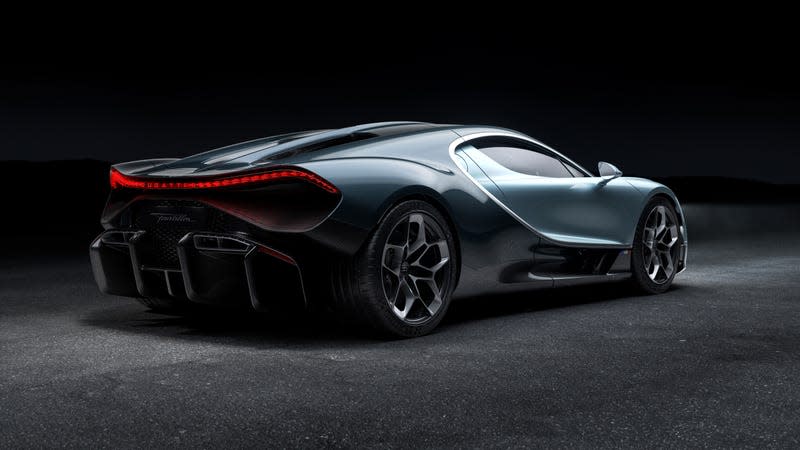
Weight: With ever-increasing customer demands for additional performance, comfort, and interior space, cars tend to gain weight generation over generation. When a complex electrified powertrain is added, this gain can be a step-change above previous models. At over two tons, the outgoing Bugatti Chiron was no featherweight. But despite adding three electric motors and a 24.8-kWh battery, and upsizing the engine, cabin, and cargo capacity, the Tourbillon weighs less than the Chiron. This magic was accomplished through a variety of techniques: carbon composite construction, using the battery as a structural member, making frames out of thin-wall aluminum castings, and 3D-printing the structural braces along with suspension and airfoil components. Bugatti even light-weighted the monster engine, which weighs “only” 555 pounds in contrast to the nearly 900-pound weight of the outgoing W16. We wonder if, combined, these 32-cylinder pair weigh more or less than the 12.8-liter straight-8 that powered the brand’s Type 41 Royale in the 1930s.
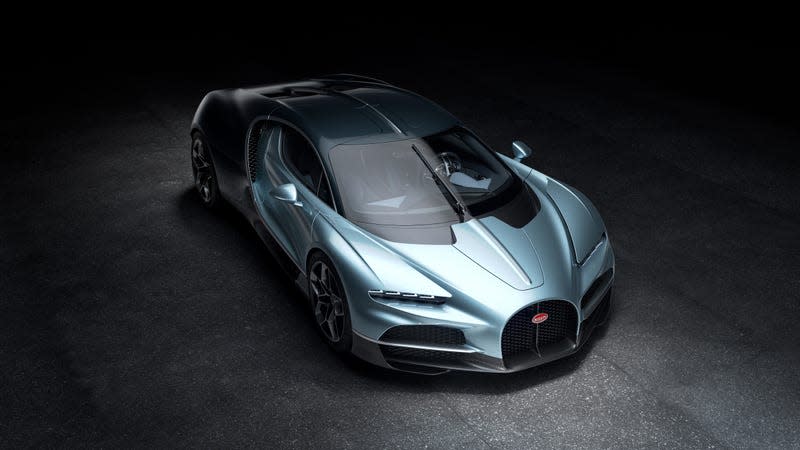
Frunk: The Veyron and Chiron were not known for their interior storage, so for long trips, owners typically outsourced banal physical acts like carrying bags to sherpas or other servants, who likely followed on foot, or in a fleet of Mercedes Sprinter vans. The Chiron’s frontal storage area was famously sized to fit a briefcase. A wider front track, along with a cooling system that ducts air through and out of the hood, affords a frunk between the twin front radiators, large enough for a set of bespoke Tourbillon luggage. We would spec it to match our interior, of course.
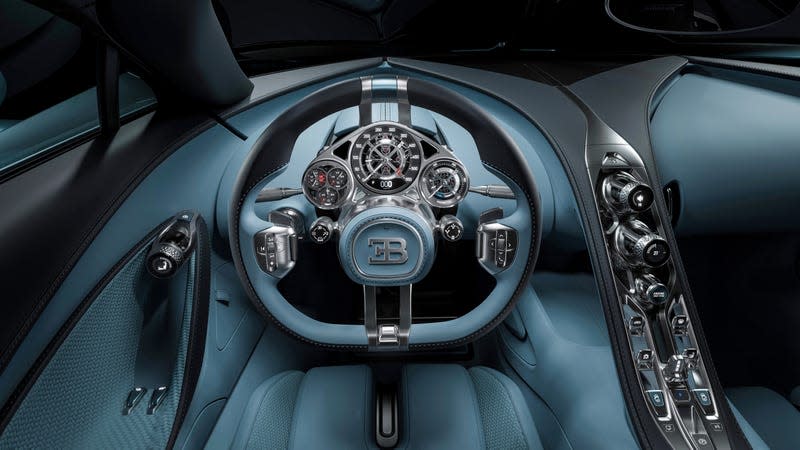
Startup: Starting a vintage Bugatti is a time consuming experience. But it is just that, an experience, a memorable event. The simple twisting of a key, or pushing of a button — even if it’s covered in a protective flip-up flap, like a fighter jet — isn’t enough of an occasion for a vehicle of this caliber. Bugatti has solved that by incorporating a new iteration of an old technology: an ignition pull. Like on a Duesenberg SSJ, you pull it out to start the motor. Unlike a Duesenberg SSJ, it’s made of crystal and aluminum. Also unlike a Duesenberg SSJ, you push it in to stop.

 Yahoo Autos
Yahoo Autos 